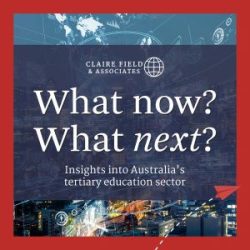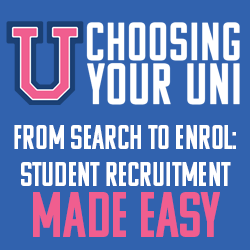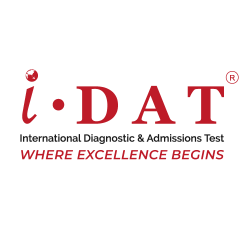In the 2019 pre-covid dizzy heights, through the Department of Education, OS-HELP injected more than $101m into learning abroad, critical support for over a third of Australian outbound students.
The value of these OS-HELP loans was 40% greater than the sum of all other reported funding injections into learning abroad during 2019 (excluding the student contribution). Clearly, the government is influential; guardian of a key policy lever.
So, with 20 years of national service, OS-HELP ‘paused’ temporarily in September 2023 for a timely review of guidelines. A document that remained unchanged across a decade – in an energised fast-paced and youthful sector, now unrecognisable from its infancy and germination of OS-HELP in 2003.
The August 2023 Higher Education Provider update advised guidelines would sunset on 1 October. Good to their word and timing, Minister Clare and the Department of Education reviewed, updated and released new guidelines dated 29 September 2023.
Assessment of the guidelines?
That’s another story… because, concurrent with the review, the 2024 indexed rates for OS-HELP were released.
Remember, the CISaustralia Learning Abroad survey highlighted that 50% of institutions felt OS-HELP had lost pace with inflation (TKN 27 Sept 2023). So, this rate release is a marker of OS-HELP’s capability to sit in the suite of offerings bundled together to enable learning abroad.
With 37 universities responding to the survey, the sector’s pulse can’t be ignored. So, what does the change represent?
The maximum OS-HELP amount in 2024 for study across a 6-month period is;
- $7,921 if not studying in Asia (up from $6,567 in 2017)
- $9,504 if studying in Asia (up from $7,880 in 2017)
- An additional $1,263 for Asian language study preparation (up from $1,050 in 2017).
Comparing the 2017 and 2023 rates shows an apparent blanket 20% increase for each category across 7 years. So, temporarily, let’s pause the inflation critique for another time. While understandable and legitimate, it will always be a contestable measure of relativity.
The more nuanced messaging is that Asia, from an OS-HELP perspective, appears no more (or less) important in contrast to the rest of the world as perceived back in 2013. Yet we only need to look at the recent focus on investment into Asia, for example, Australia’s South East Asia Economic Strategy to 2040 to quickly counter this.
Australia has traditionally set the global benchmark, with the highest proportion of its undergraduate cohort having a learning abroad experience. We are well on the way to meeting and exceeding previous levels, according to Brad Dorahy, Founder and CEO of CISaustralia. “While 25% of Australian universities are planning to send 1,000+ students abroad in 2024 and 3 institutions plan to send 4,000+ students abroad in 2024, 67% of universities will be at 50% or better recovery post-COVID,” he says.
So, the capability sits latent for OS-HELP to be a key enabler of the sector’s reboot. Remember, how OS-HELP is calibrated and presented publicly is not simply a financial transaction to support students; it transforms the way our regional relationships are viewed – it says something about our priorities.
A (tiny) bit of history.
While the significant uptake of OS-HELP assists Australian students to study overseas (TKN 10 August 2023), it has been used as a conservative instrument in terms of our relationship with Asia.
The Higher Education Support Amendment (Asian Century) Bill 2013 created the Asia OS-HELP option in response to the Government’s Asian Century White Paper, with then Minister Bowen noting:
“The Prime Minister released the Australia in the Asian Century white paper on 28 October 2012, to serve as a roadmap for navigating the Asian century. The white paper identified a need for a larger number of Australian university students to be studying overseas and for a greater proportion of them to be undertaking part of their degree in Asia.”
The measures, specific to Asia at that time, were part of a broader push to advance study in Asia through Asiabound, a $37m program over three years – financially and strategically superseded by the annual $51m New Colombo Plan initiative.
With the Commonwealth OS-HELP budget allocation ceiling never being tested, it has ample program growth capacity ‘built-in’. It’s accessible by all Australian CSP students, so there is lots to like about the creative upside potential.
Are we just tinkering around the edges?
Yes, quite possibly.
The blanket increase (inflationary or otherwise) has, critically, not kept pace with signposting by the Australian government to reflect investment in strategic Asian relationships.
We only need look at recent activity within Australia’s educational, development and diplomatic engagement to see opportunities highlighted;
- The Australian Universities Accord and Inquiry into Australia’s tourism and international education sectors are two current examples with significant political currency.
- During this government’s short tenure, we see a suite of Australian FTA activity combined with a significant surge in public diplomacy across Asia through Foreign Minister Wong. High-profile public facing indicators of the surge in grassroots Australian connectivity.
- Among examples with key partners, education features heavily in the Australia – Vietnam Enhanced Economic Engagement Strategy, the Indonesia Australia Comprehensive Economic Partnership Agreement and the Australia India Economic Comprehensive Trade Agreement.
Look forward to the pending 50th Anniversary of Australia’s engagement as the first ASEAN dialogue partner in 2024 and it’s not hard to see where investment in students as our future workforce with Asia capabilities should be focussed.
Conversations embracing this step us toward reframing OS-HELP allocations; aligning them with regional relationships. The 2013 Bill profiling Asia in OS-HELP was a step change shift at the time. However, it has lay dormant for a decade, losing impetus and opportunity while Australia’s desire for engagement in the region has surged ahead.
Many ways forward
Globally OS-HELP is a unique lever, an Australian standout and visionary investment. We all hold stewardship and responsibility for its future. The department are champions of the initiative, open to reflections and input to guide its development and impact.
The Australian capacity to bring our regional engagement aspirations to life are underpinned by the Asia capability of our future workforce. This starts with young people spending time in the region. With 49% of learning abroad experiences into the Indo-Pacific there is huge upside – through multiple, longer, creative, hybrid and deeper engagements.
Shifting the dial not only signals intent to students and incentivises pursuits in Asia, it also sends a message to educational institutions and industry that education is aligned to regional strategic investments in Australia’s future.
Beyond indexation, this lever should recalibrate our investment into Asia – it’s not simply a blunt instrument. The OS-HELP funding pool has surplus capability that can generate generous and serious uplift for the Asian language supplement and students focussing on study programs into Asia.
OS-HELP is not ‘just a student loan’; it’s a national asset that says more about us than we realise. People-to-people exchange underpins future trade and investment success, cultural, arts and scientific diplomacy, sporting engagement and our aid and development endeavours.
While OS-HELP has kick-started many young Australians’ passion for Asia… it can do more.
For reading pleasure;
- 2023 version OS-HELP guidelines have been released here
- If you have a historical bent, the previous guidelines are here
- 2024 indexed OS-HELP rates are here
Note: Thank you to the Australian University International Directors Forum, Department of Education and CISaustralia for data.


















